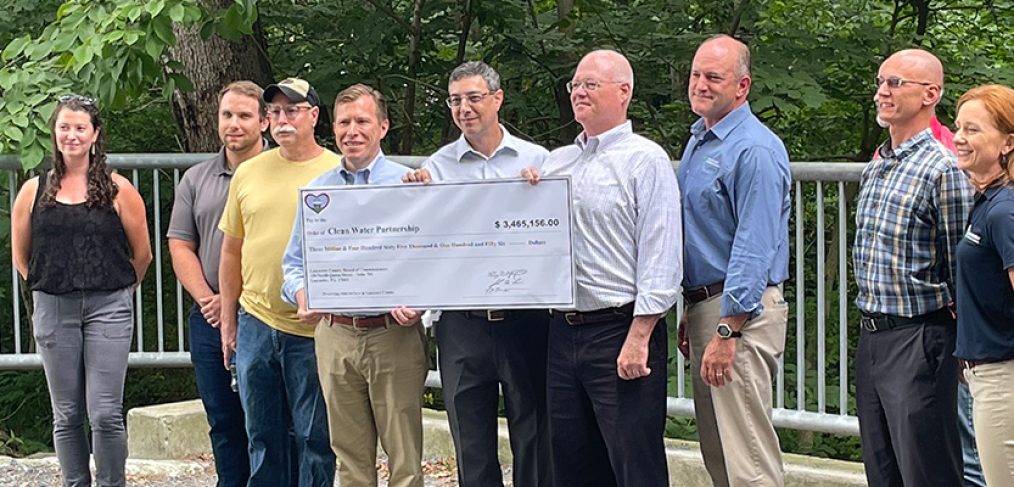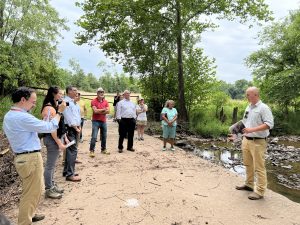
$3.5 Million ARPA Investment in Clean Water Projects
Eleven water quality projects in Lancaster County, including the Conewago Creek Floodplain Restoration, were bolstered with nearly $3.5 million from the county’s American Rescue Plan Act (ARPA) funds. To celebrate this largest-ever investment in the county’s water quality, LandStudies staff were in attendance at the Conewago Recreational Trail in Elizabethtown on July 26, where members of the Lancaster County Board of Commissioners presented a check to the Lancaster County Conservation District on behalf of the Lancaster Clean Water Partners.

Photo Source: Lancaster Clean Water Partners
LandStudies’ own Reid Garner addressed the group to highlight the diverse ecological and community benefits of the Conewago Creek project, which spans Lancaster and Dauphin counties. The project provides water quality benefits that help Londonderry and Mt. Joy townships fulfill obligations of their Municipal Separate Storm Sewer System (MS4) Pollutant Reduction Plans and supports Lancaster’s and Dauphin’s Countywide Action Plan goals.
The project will restore a nearly 15-acre floodplain wetland complex by removing 125,000 cubic yards of legacy sediments. Phase 1 was recently completed, and Phases 2 and 3 are slated to be complete in 2023. Further efforts are underway to establish 45 acres of natural riparian areas adjacent to the project site in both Lancaster and Dauphin counties.
LandStudies provided design services and permitting guidance for the award-winning restoration on behalf of Londonderry Township’s engineer and project lead, Herbert, Rowland & Grubic, Inc. The effort was made possible through broad partner support from Mt. Joy Township, the Dauphin and Lancaster County Conservation Districts, the Lancaster Conservancy, Penn State, and others.
The restoration project runs parallel to the Conewago Recreation Trail, which is a popular spot for walking, biking, and other recreational uses. The proximity to the trail will allow visitors to see the project’s progress and show that multiple partners can work collaboratively to improve water quality
locally. Read more about the project here.



